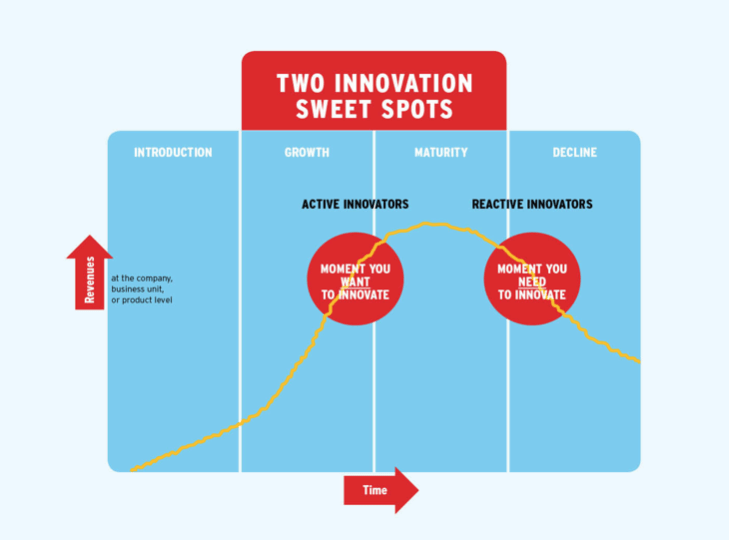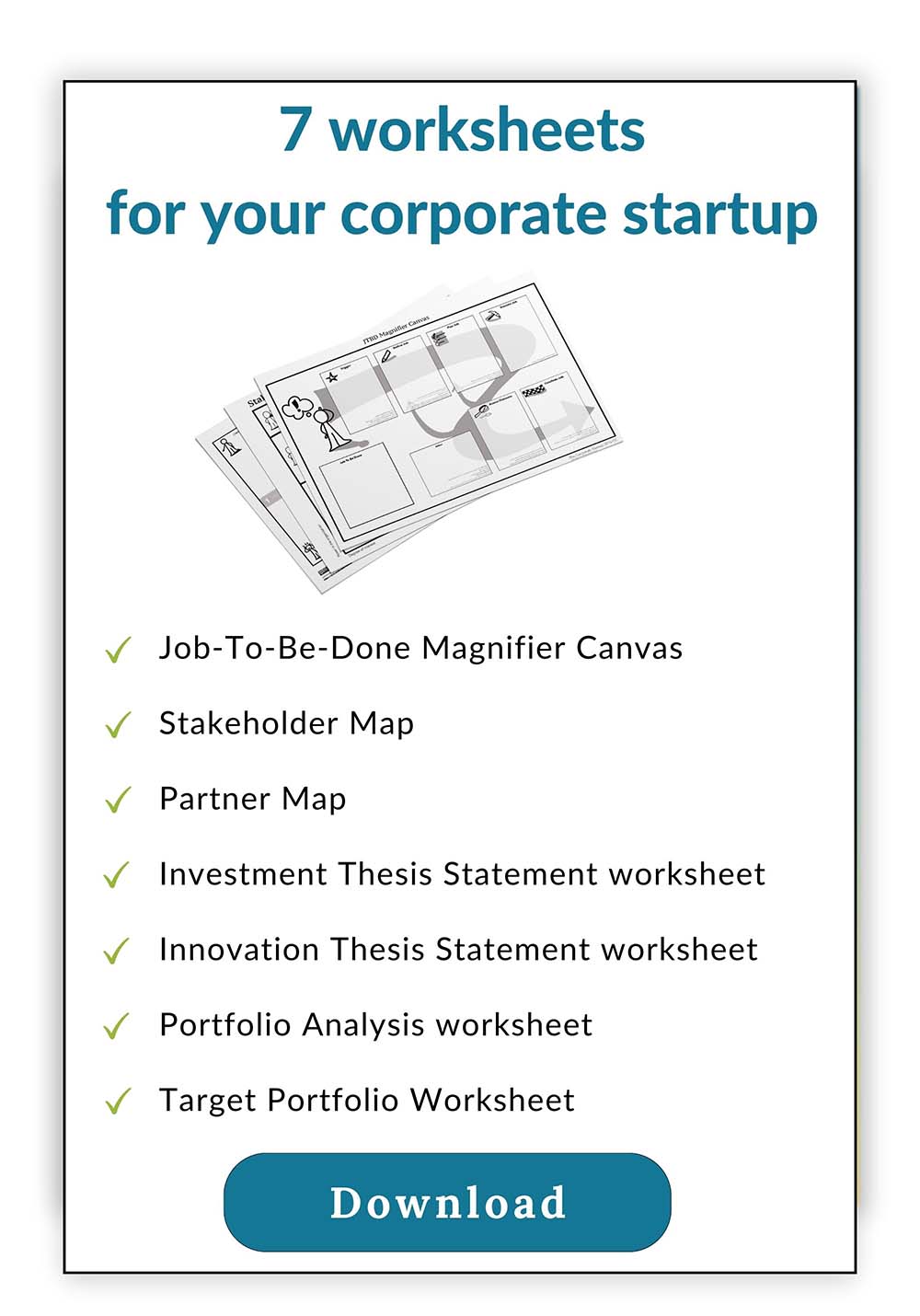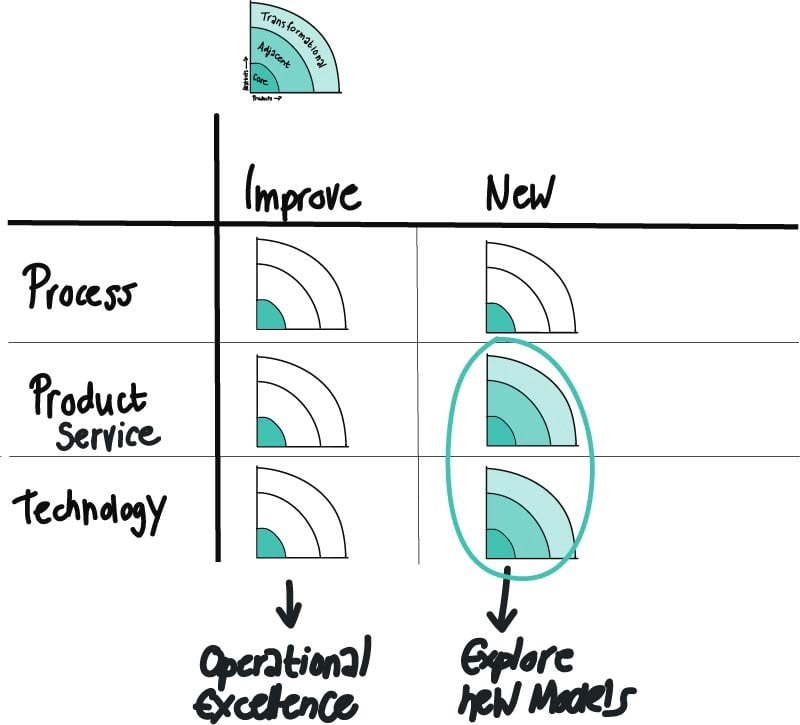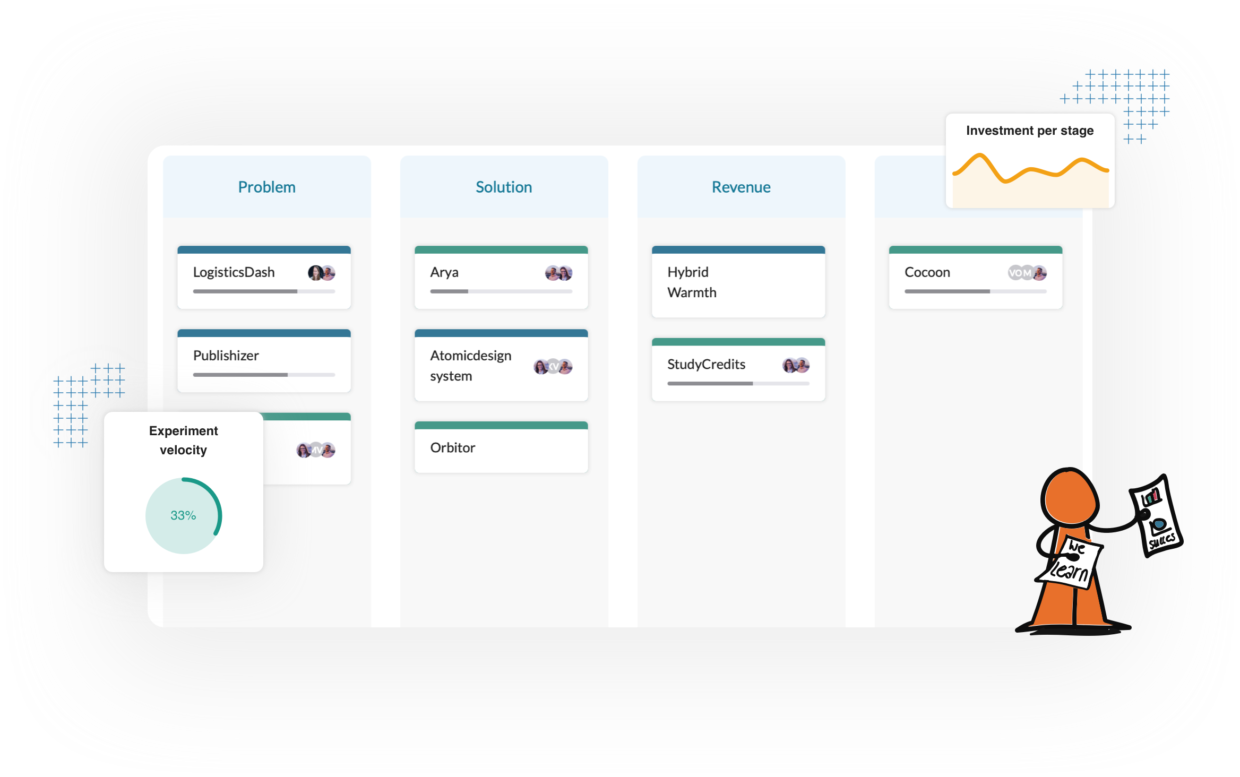Innovate or die! What does innovation mean in your company?
Apart from the well-known adagium, it is the most common answer I get when talking to companies about their most urgent reasons to innovate. “We need to! Our industry is being overtaken by startups left and right”. “We need to! How else are we going to survive when everything around us is changing so fast”. For most companies, it is that pain of realizing that the product lifecycle also has an end (or renew phase).
The need for innovation
According to Gijs van Wulffen, there are sweet spots for innovation.
One is on the ‘up’ curve of your product lifecycle when the exploitation of the product is still in the growing phase. This moment has the advantage of having enough money to invest in innovation. There is also a higher chance of being able to have a longer-term vision since there is no real pain yet. It ensures you the time needed for ideas to come to life and mature, a process that often takes around 3 to 7 years.

The other sweet spot is on the downside of the curve when there are immediate urgency and pain. Most often this pain acts as a motivator. There is a ‘need’ to innovate rather than a ‘want’. It also, however, oftentimes prevents companies to dare and invest in risky and longer-term projects.
Once there is an immediate need to innovate, this urge is delegated by the board to all the employees in the company. Hoping that ‘innovation’ in general will make the company more future proof as a whole. Becoming more customer-centric as a company, or starting digital transformation within the company are often starting points for ‘innovation’ in general. Often overlooking the obvious question, what is it that needs innovating and what can we use to do that?

[convertkit form=5141483]
What does innovation mean in your company?
Innovation is a ‘big’ word. It makes sense to start defining what ‘innovation’ means in your company. Innovation can be several things, for different purposes. This is not a bad thing, as long as everyone agrees on these definitions and purposes. Once this is clear it makes sense to start asking how and by what means you can achieve this.
Why do you innovate?
Now if the reason for innovation was, “Otherwise we’d die!” the ‘what’ of innovation most probably will need to be a new business model to renew or replace the product lifecycle of the current one. The cause of the immediate pain and diminishing returns. However, from the companies that I have worked with over the years the ‘how’ almost always ended up being nothing more than an innovation lab that works on the companies operational excellence rather than its innovation excellence.

If we use the following matrix to plot innovation, dividing innovation into innovation of processes, innovation of products and innovation of technology. And divide these between improving current and creating new ones. Where does the new app go that optimizes conversation and communication of customer support and the back office? Or the machine learning tool that reduces the time that analysts need in a process? These all are excellent examples of innovation. But they both fit in the box process. An innovation on current processes, yes, but still only contributing to operational excellence.

Commit to risks and long-term
This is not surprising if you realize that most companies have structures and processes in place that do not allow for risk. Or, when there is risk involved, demand for some sort of return within the time span of a year.
This process is often driven by years of cost-cutting and diminishing returns. This in itself is not a bad thing because these processes mean the survival of the current company. It is needed to be able to adjust to people’s demands. The core is the source of your resources for survival and those needed for innovation as well. But if your ultimate aim to innovate was to create new business models, it makes sense to purposefully commit to high risk and have a long-term vision towards innovation. Otherwise, all innovation that is attempted within a company, no matter how lean or customer-centric, will have a hard time moving past improving operational excellence.
[convertkit form=2570335]
For innovation excellence, the company needs to commit to risk and a longer-term vision of the future. They need to build a different process and structure that allows for exploration. Because a new and working business model is not built by one team doing a couple of design sprints. It takes several teams trying multiple initiatives to find out what works and what doesn’t. “Be patient and build an innovation process.” For the secret to success lies within the number of opportunities tried and learned from. 5 conditions for professionalizing innovation is a good starting point if you want to learn more about how to build this different process and structure.
[convertkit form=2602167]

Esther Gons is the award-winning author of The Corporate Startup & Innovation Accounting. Winner of the 2022 Golden Axiom Business Book Award, 2019 Golden Axiom Business Book Award, and the 2018 Management Book Of The Year Award. She is an expert in Innovation Accounting, Innovation Strategy and Portfolio Management.
